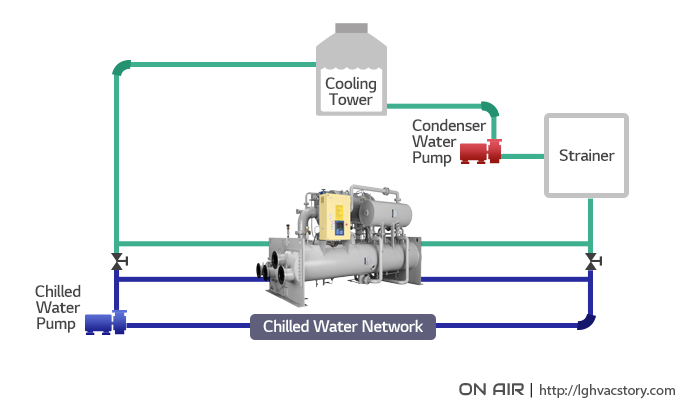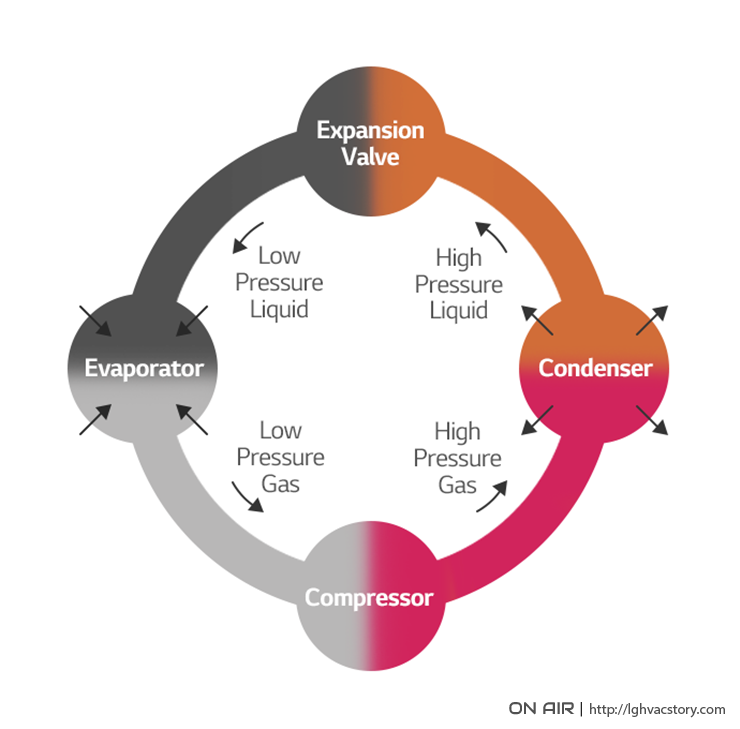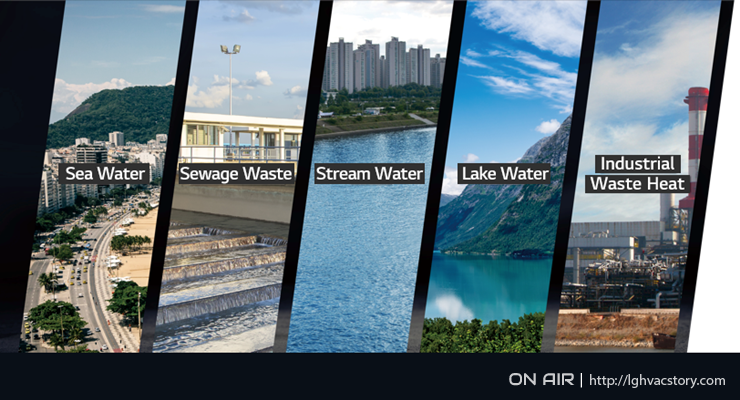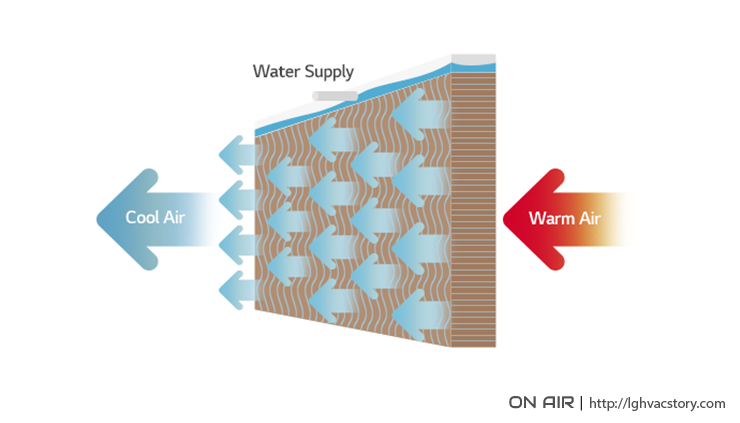The Facts at Hand
Air conditioning systems are designed to dehumidify and remove heat from a designated space using a simple refrigeration cycle. These systems have condensers that are essentially heat exchangers that transfer heat to air or fluid and carry the heat away. The resulting cool air is then pushed through ducts or distributed by fans to cool the area where the systems are installed. This type of cooling process is very similar to the cooling process of a refrigerator. Substances known as refrigerant are compressed into gases within a network of coils and this causes them to absorb heat. The heat is then transferred via the refrigerant away from the system and this process is repeated.

Water-cooled chiller process
How Chillers Work
Chillers typically remove heat through a vapor compression or absorption refrigeration cycle process. When we sweat on a hot summer day, the sweat evaporates from our skin and heat is removed from our bodies as the sweat evaporates. The sweat in this process works in a similar way to how refrigerant is used in the cooling process of a chiller. Chillers can be divided into absorption type chillers and vapor compression type chillers. In absorption chillers, heat is removed from the environment through a low pressure water evaporation process. The water is then reabsorbed and condensed so that it can be cycled back into the system and the process can begin again. The heat energy must also be released into the atmosphere and cooling towers are often used to lower water temperatures in large chiller systems. Vapor compression chillers implement compressors that compress refrigerant and then the refrigerant is allowed to expand and evaporate to remove heat from the system. The refrigerant is then compressed again to continue the cooling cycle. Centrifugal, screw, scroll and reciprocating compressors are used in vapor compression chillers depending on the type of system installation.

The Chiller Difference
These types of chillers can be a more energy efficient option than split system air conditioners or Variable Refrigerant Flow (VRF) systems for cooling large spaces such as large buildings or industrial facilities. The use of water along with refrigerant allows large amounts of water to be distributed longer distances than refrigerant and makes chillers a sound option for large spaces. Because chillers provide a continuous supply of chilled water, it is also possible to implement chillers in places such as large buildings, power plants or factories where there is a need for cool water beyond just air conditioning. By changing the configuration of a chiller system, a chiller can also be implemented as a heat pump by utilizing the thermal energy from sources such as power plant waste or even the ocean. Absorption chillers can also be a valuable solution is places where powers supply is lacking. Certain thermal energy storage chiller systems can also store ice or cool water that is cooled while electricity demands and costs are low and then use it to cool during peak electricity demand hours. It is also possible to run these types of systems in parallel to VRF or split systems to offset overall energy costs.

Power plants generate warm waste water

There are also evaporative condensing chillers that implement the cooling effect of evaporation. In these types of chillers, water is sprayed over a set of coils from above while air is simultaneously blown through the coils. This process takes advantage of the natural evaporation cooling effect and the resulting lower condensing temperature reduces compressor workload and makes the overall system operate more efficiently. The evaporation process has long been used to transfer heat into the atmosphere. Evaporating condenser chillers can also reduce installation costs and maintenance costs and can be utilized in virtually any installation environment.

The natural evaporation cooling effect
Though we may not see them, chillers are a popular and cost efficient air conditioning solution and can be found in both commercial and industrial applications around the world. These systems utilize natural occurring process in our environment to provide daily comfort to many of us daily. Keep an eye out for chiller systems in your building and consider installing a chiller system next time you’re on the market for an air conditioning solution.


































